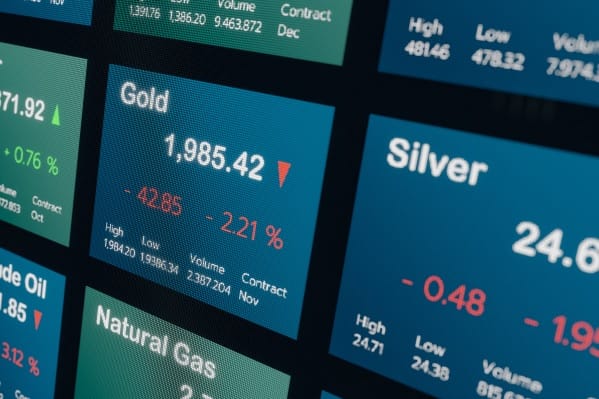You have a collection of silver jewellery, coins, flatware, or other valuables that you’ve been thinking about selling, but you want to make sure that you’re going to get the absolute best price possible for them.
Not only do you need to find silver buyers who offer the most competitive prices, but you also have to take into consideration timing and the economics of silver. Silver is a commodity that’s exchanged globally, and just like other commodities and stocks, prices change with every deal struck. Silver buyers like Muzeum can be a great solution when you’re ready to cash in your investment. When you sell your silver to Muzeum, you can check out their rates online, as they’re posted and updated with the live markets.
Before you sell your silver, it pays to understand the economics of the metal and how to evaluate the current price of silver.
Could silver hit $35 per ounce in 2024?
The price of silver is always fluctuating, but at the start of 2024, it was around $23 per ounce. Some analysts predict that prices could rise to nearly $35 per ounce, a significant increase that could also make a major difference when you sell your own silver items.
But analysts can be wrong. What factors should you look for to see if silver is heading in the right direction? The fundamentals of supply and demand are the most reliable yardsticks for anticipating where silver is going.
ETFs and electric vehicles: Rising silver demand
Demand for the precious metal is projected to rise considerably from a couple of different sources:
- Industrial demand as a result of stronger economic growth and changing technologies.
- Rising demand from Exchange-Traded Funds with physical backing.
Silver is a particularly important component in batteries, as it is used as a catalyst in a number of manufacturing processes. In particular, it plays a major role in both solar panels and the batteries used in Electric Vehicles. As economies shift toward renewable energy sources and cleaner automobiles, silver demand is set to rise.
Meanwhile, ETFs provide investors with an easy way to access silver investing without having to worry about storage. ETFs hold an estimated 748 million ounces of silver, and rising interest can also push demand higher.
Flat silver mining supplies follow lack of capital of investment
Over the last several years, the silver mining industry has faced several headwinds, including a lack of capital investments, creating a supply deficit of around 142.1 million ounces of silver. The industry is also struggling with:
- Rising energy and labor costs involved with the mining process.
- Bans on open pit silver mining in Mexico, which is the world’s largest source of silver.
- Increasing environmental regulations around the world.
With these barriers in the way, investors have struggled to justify large capital investments in new silver mines. In fact, about 80% of silver mined in the world is a byproduct of mining other metals like gold, copper, lead, and zinc.
The silver supply is slow to catch up to rising demand. It takes time and money to find new deposits, get the financing for a new mine, and set up the infrastructure to extract it. High prices due to a supply crunch can persist for an extended period of time before investment in production catches up.
If you’ve been considering selling silver, keep a close eye on prices and watch the market factors described above.
The above information does not constitute any form of advice or recommendation by London Loves Business and is not intended to be relied upon by users in making (or refraining from making) any finance decisions. Appropriate independent advice should be obtained before making any such decision. London Loves Business bears no responsibility for any gains or losses.






Leave a Comment